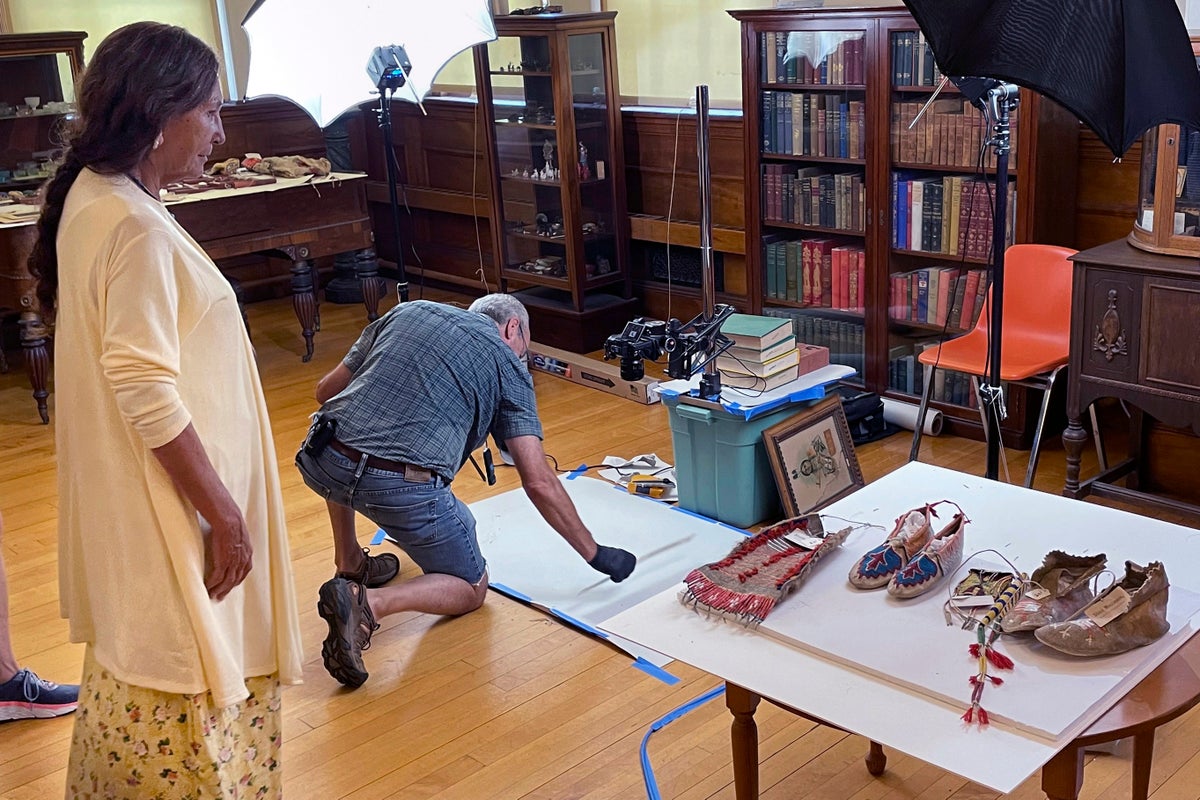
About 150 items considered sacred by the Sioux peoples that have been stored at a small Massachusetts museum for more than a century are being returned, museum and tribal officials announced Monday.
The items including weapons, pipes, moccasins and clothing — about seven or eight of which are thought to have a direct link to the the 1890 Wounded Knee Massacre — are due to be formally handed over during a ceremony scheduled for Nov. 5, Ann Meilus, president of the board at the Founders Museum in Barre, said during a news conference on a day that several people present noted is more commonly being celebrated as Indigenous Peoples Day.
“This is not our history of Barre. This is the Lakota Sioux's history, and we should honor the Lakota Sioux and what they desire,” she said.
It is a repatriation project that has been decades in the making.
The return of the items is a chance to “begin that process of healing," Kevin Killer, president of the Oglala Sioux tribe said.
The items being returned are just a tiny fraction of an estimated 870,000 Native American artifacts — including nearly 110,000 human remains — in the possession of the nation's most prestigious colleges, museums and even the federal government that under federal law are supposed to be returned to the tribes under the 1990 Native American Graves Protection and Repatriation Act, often referred to as or NAGPRA.
While the Barre museum maintains that as a private institution that does not receive federal funding, it is not subject to NAGPRA, returning items in its collection that belong to Indigenous tribes is the right thing to do, Meilus said.
Wendell Yellow Bull, a descendant of Wounded Knee victim Joseph Horn Cloud, said the items will be stored at Oglala Lakota College until tribal leaders decide what to do with them.
“Upon the return of the items, there will be a mass meeting and a very meticulous discussion on how and what we're going to do with the items," he said. “Most of all, there are items from the massacre site, so a lot of preparations and ceremonies must take place in order for us to proceed forward."
More than 200 men, women, children and elderly people were killed on the Pine Ridge Indian Reservation in December 1890 in one of the country’s worst massacres of Native Americans. Congress issued a formal apology to the Sioux Nation for the massacre in 1991.
The Barre museum acquired its Indigenous collection from Frank Root, a 19th century native of the town about 70 miles (112 kilometers) west of Boston. He was a traveling shoe salesman who collected the items on his journeys, and once had a road show that rivaled P.T. Barnum's extravaganzas, Meilus said.
The items being returned to the Sioux people have all been authenticated by multiple experts, including tribal experts. The museum has other Indigenous items not believed to have originated with the Sioux.
Artist Michael He Crow used his expertise of traditional Lakota Sioux artwork and craftsmanship.
“I am able to recognize some of the designs and the colors that the Lakota used at that time," he said.
There was a time when specific designs could be traced back to a particular family, but because those designs have been reproduced and replicated so many times over the years, that is now nearly impossible, he said.







